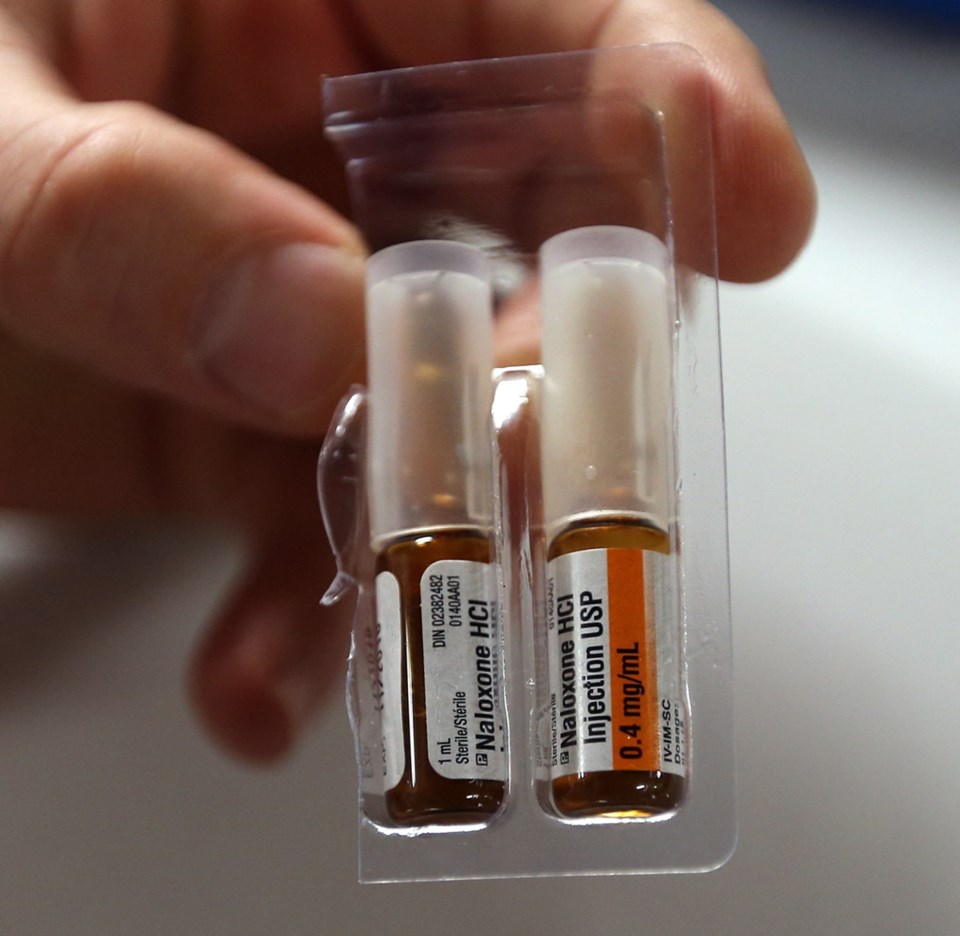Victoria police officers are now equipped with naloxone nasal spray, which provides life-saving treatment to people who have overdosed on opioids or to officers who have been accidentally exposed.
The police department also supports opening a safe-consumption site as a harm reduction measure that could prevent overdose deaths.
A dozen naloxone nasal sprays have been given to beat officers downtown and placed in VicPD supervisor vehicles, police cells and in police headquarters in Victoria and Esquimalt.
“We wanted to make sure that as first responders or potential first responders, as a police department we’re also stepping up [to address this drug-use crisis],” said Acting Police Chief Del Manak.
Police are not typically dispatched to overdose calls, as first response falls to paramedics and firefighters. However, officers could come across people suffering from an overdose while on patrol.
“We want to be able to provide that emergency intervention if an officer comes across a situation where they are the first on scene,” said Victoria police drug expert Sgt. Conor King.
“They want to be part of the solution as a first responder that’s properly equipped.”
The spray can also be used, for example, to treat an officer who is accidentally exposed to fentanyl, a synthetic opioid that’s 50 to 100 times more potent than heroin. A few grains of the drug can kill man. The drug has played a role in more than half of overdose deaths in B.C. this year.
Sgt. Sean Plater, president of the Victoria police union, said the decision is important for officer and public safety. “After recent incidents in B.C. with police officers having adverse reactions from fentanyl exposure, this is a welcomed step to provide an extra layer of protection for our members.”
Police officers and civilian staff were trained last week in the use of the spray.
Victoria police are working with the City of Victoria and Island Health to set up a safe-consumption site. Manak said the department supports supervised consumption sites if they’re part of an approach that incorporates comprehensive treatment services. “We recognize that lawful harm- reduction measures are an important component of public health objectives.”
Manak said the status quo is insufficient to help those with addictions. “We think that there’s a better model out there.”
Island Health must apply for a federal exemption to operate the site. Victoria Coun. Marianne Alto has said she hopes that application will be filed by the end of the year.
Statistics released last month by the B.C. Coroners Service showed that Vancouver Island has the worst rate of illicit drug overdose deaths in the province this year. Island Health had a fatality rate of 18.1 per 100,000 to the end of August, the highest among all health authorities. The rate for the province was 15.5 deaths per 100,000.
— With files from Louise Dickson
What is naloxone?
Naloxone, sold under the brand name Narcan, is an opioid antidote that can reverse the effects of an overdose and stimulate breathing.
The province has committed $10 million to fund overdose prevention, part of which will cover the cost of naloxone kits or nasal spray for police officers. The spray costs $145 per bottle.
The RCMP plan to distribute naloxone kits to Mounties. The Vancouver and Abbotsford police departments will also equip officers with naloxone spray and kits.
As of Sept. 21, a total of 13,746 naloxone kits had been distributed with reports of 2,149 kits used to reverse opioid overdoses; 11,629 people have received training to administer naloxone.
Naloxone kits are available at 297 B.C. sites, including most hospital emergency departments, three provincial correctional facilities and one federal correctional facility. All ambulance crews and 46 fire departments carry naloxone.



